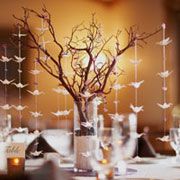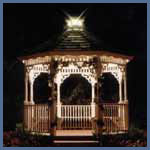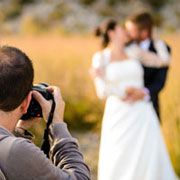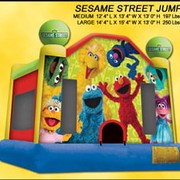How Do You Bussell A Wedding Gown?
I am getting married Sept 6, 2003. My seamstress and I are having trouble figuring out how to do the bussell (bring the train up to dance) on the dress for the reception. If anyone knows how to bussell the dress or has a picture please let me know. I know there are many different ways but I can`t seem to find one example.
I don`t know how I got to this web site but I am glad I found it. I have been reading some of the messages and some have really helped me. Good luck to all of you with your weddings and best wishes to your new life.
I don`t know how I got to this web site but I am glad I found it. I have been reading some of the messages and some have really helped me. Good luck to all of you with your weddings and best wishes to your new life.
Posted by Dawn; updated 07/30/03
Reply
This is an excerpt I found doing a google search on bustles. I believe it was found on the Renaissance Central website if you want the complete information.
<<<
The bustle should be done when you are having your final fitting after the hem is finished.
* The bustle can be simply a ribbon wrist loop that is sewn to the inside of the dress - catching the lining and the dress at the center back seam of the train - that you hold as you move around to greet your guests. Be careful with this one; if you put the loops to high it will make the dress too revealing and the fabric can get pretty heavy or even break the loop.
* If your dress has a raised, natural or sloping waistline, you can sew hooks and eyes for a more interesting look.
* Eyes are sewn at the waist line seam starting about 4" from the center back on each side of the dress. How many you will need depends on the length of the train.
* Hooks are sewn about 6" out from the center back seam at 14" to 20" down from the waist seam.
* You will want to hide the hooks and eyes under lace appliques, rosettes or bows (which you might have to add to the dress) . Now you know why so many bridal dress manufacturers have those big bows at the back waist of the dress. That is the perfect place to hide the hooks and attach the train. You will need from two to four loops to bustle the dress.
* Another way to achieve the same effect, without the hooks, is to use covered buttons in place of the eyes at the waistline. This is especially nice if you already have buttons down the back of the dress.
* In place of the hooks use clear fishing line with a pearl so your attendant can easily find the loops. Do this the same way as the hooks; just replace the hooks with the fishing line loops.
* Thread 10 lb. Fishing line though a large eye needle. On the inside of the dress, catching the lining and the dress. When you come to the front, thread the fishing line through the hole in a pearl, then back through the dress and lining. Then tie several square knots and clip the excess.
* You can also make crocheted loops with a chain stitch if the fabric is not too heavy.
* When doing this kind of bustle, the person responsible for helping you to bustle the dress will need to know a little trick to make sure the loops hold onto the buttons: before you loop onto the button, turn the loop and dress two turns clockwise, then loop onto the button and turn back. This will help firmly secure the bustle loop.
* If the train is long, you might need to use more buttons and loops.
* Pick a point on the center back seam of the train about half way down and pull that up to meet the center back at the waist.
* Keep adjusting this point up or down until the center back seam of the train is just touching the floor.
* Pin with safety pins; this is your first point of bustle loop.
* Go to the right side and do the same, bringing a portion of the skirt up to the waist where the next button is, then repeat on the other side.
* Most skirts will need a three or five button bustle. Use the safety pins as your guide for the loops and buttons.
* When you do not have a waist seam to attach the bustle to, a French (inverted) bustle will do the job. The French bustle is when the gathers of the bustle are brought to the inside of the dress.
* A series of carefully spaced ties down the inside of the dress at the center-back seam catch the dress and lining so the lining does not show. This gives you a cascading effect.
* For a more dramatic look a group of loops on the inside of the dress in a diamond shape with a ribbon running through them, gathered up and tied, will give the back of the dress an interesting bouffant effect.
* Another way of bustling a dress is to sew bias trim to the inside of the dress at the seams of the back. Pull a ribbon through the tape and gather it together to achieve a look somewhat like a balloon curtain. >>
The site had drawings of the different bustles that they were talking about to clearly illustrate how each of the bustles looked. Anyway, I would post the website here, but the partypop people tend to abhorr anysort of illegal advertising of websites or stuff so you can e-mail me for a more specific address. I hope this helps you or your seamstress!
Amanda
Theflowerpress@yahoo.com
<<<
The bustle should be done when you are having your final fitting after the hem is finished.
* The bustle can be simply a ribbon wrist loop that is sewn to the inside of the dress - catching the lining and the dress at the center back seam of the train - that you hold as you move around to greet your guests. Be careful with this one; if you put the loops to high it will make the dress too revealing and the fabric can get pretty heavy or even break the loop.
* If your dress has a raised, natural or sloping waistline, you can sew hooks and eyes for a more interesting look.
* Eyes are sewn at the waist line seam starting about 4" from the center back on each side of the dress. How many you will need depends on the length of the train.
* Hooks are sewn about 6" out from the center back seam at 14" to 20" down from the waist seam.
* You will want to hide the hooks and eyes under lace appliques, rosettes or bows (which you might have to add to the dress) . Now you know why so many bridal dress manufacturers have those big bows at the back waist of the dress. That is the perfect place to hide the hooks and attach the train. You will need from two to four loops to bustle the dress.
* Another way to achieve the same effect, without the hooks, is to use covered buttons in place of the eyes at the waistline. This is especially nice if you already have buttons down the back of the dress.
* In place of the hooks use clear fishing line with a pearl so your attendant can easily find the loops. Do this the same way as the hooks; just replace the hooks with the fishing line loops.
* Thread 10 lb. Fishing line though a large eye needle. On the inside of the dress, catching the lining and the dress. When you come to the front, thread the fishing line through the hole in a pearl, then back through the dress and lining. Then tie several square knots and clip the excess.
* You can also make crocheted loops with a chain stitch if the fabric is not too heavy.
* When doing this kind of bustle, the person responsible for helping you to bustle the dress will need to know a little trick to make sure the loops hold onto the buttons: before you loop onto the button, turn the loop and dress two turns clockwise, then loop onto the button and turn back. This will help firmly secure the bustle loop.
* If the train is long, you might need to use more buttons and loops.
* Pick a point on the center back seam of the train about half way down and pull that up to meet the center back at the waist.
* Keep adjusting this point up or down until the center back seam of the train is just touching the floor.
* Pin with safety pins; this is your first point of bustle loop.
* Go to the right side and do the same, bringing a portion of the skirt up to the waist where the next button is, then repeat on the other side.
* Most skirts will need a three or five button bustle. Use the safety pins as your guide for the loops and buttons.
* When you do not have a waist seam to attach the bustle to, a French (inverted) bustle will do the job. The French bustle is when the gathers of the bustle are brought to the inside of the dress.
* A series of carefully spaced ties down the inside of the dress at the center-back seam catch the dress and lining so the lining does not show. This gives you a cascading effect.
* For a more dramatic look a group of loops on the inside of the dress in a diamond shape with a ribbon running through them, gathered up and tied, will give the back of the dress an interesting bouffant effect.
* Another way of bustling a dress is to sew bias trim to the inside of the dress at the seams of the back. Pull a ribbon through the tape and gather it together to achieve a look somewhat like a balloon curtain. >>
The site had drawings of the different bustles that they were talking about to clearly illustrate how each of the bustles looked. Anyway, I would post the website here, but the partypop people tend to abhorr anysort of illegal advertising of websites or stuff so you can e-mail me for a more specific address. I hope this helps you or your seamstress!
Amanda
Theflowerpress@yahoo.com
Posted by amanda; updated 07/30/03

The Wedding Expert
Hire a professional and experienced photographer to capture all those special moments on your weddin...

The Wedding Expert
Find the perfect wedding cake from our list of vendors....

The Wedding Expert
Find the perfect wedding decor and decorator for your wedding day....

The Wedding Expert
We'll help you find every wedding rental you need for your special day....

The Wedding Expert
Find the perfect engagement and wedding rings on our site....

Edwards Mansion
Our magnificent mansion is a perfect location for any wedding or formal celebration. Our ambiance...

The Wedding Expert
Hire a professional and experienced videographer for your wedding day, you and your spouse will enjo...

Total Entertainment - Moonwalks
Ultimate resource for rental inflatables, moonbounces, slides and all kinds of fun inflatables to...








